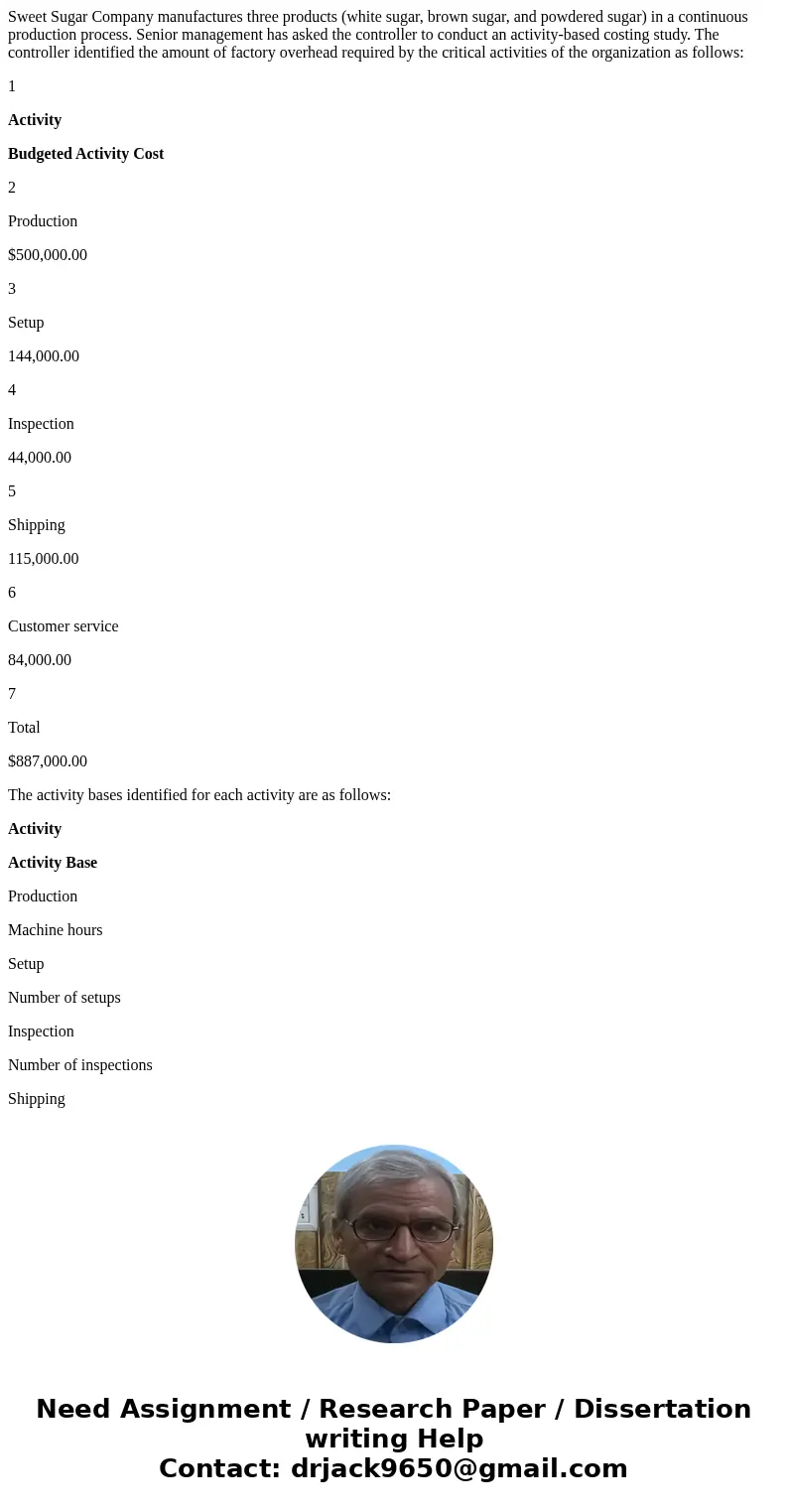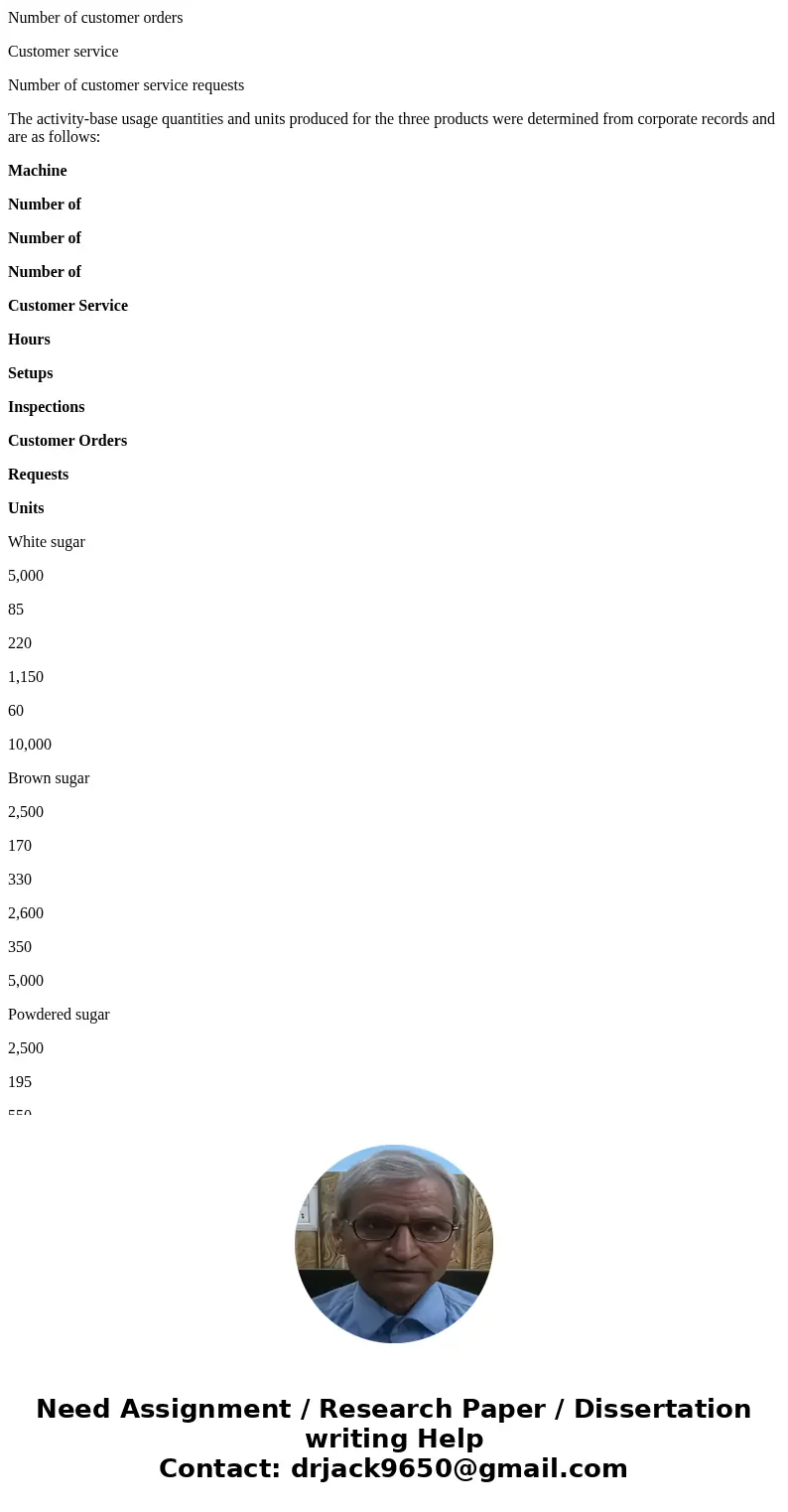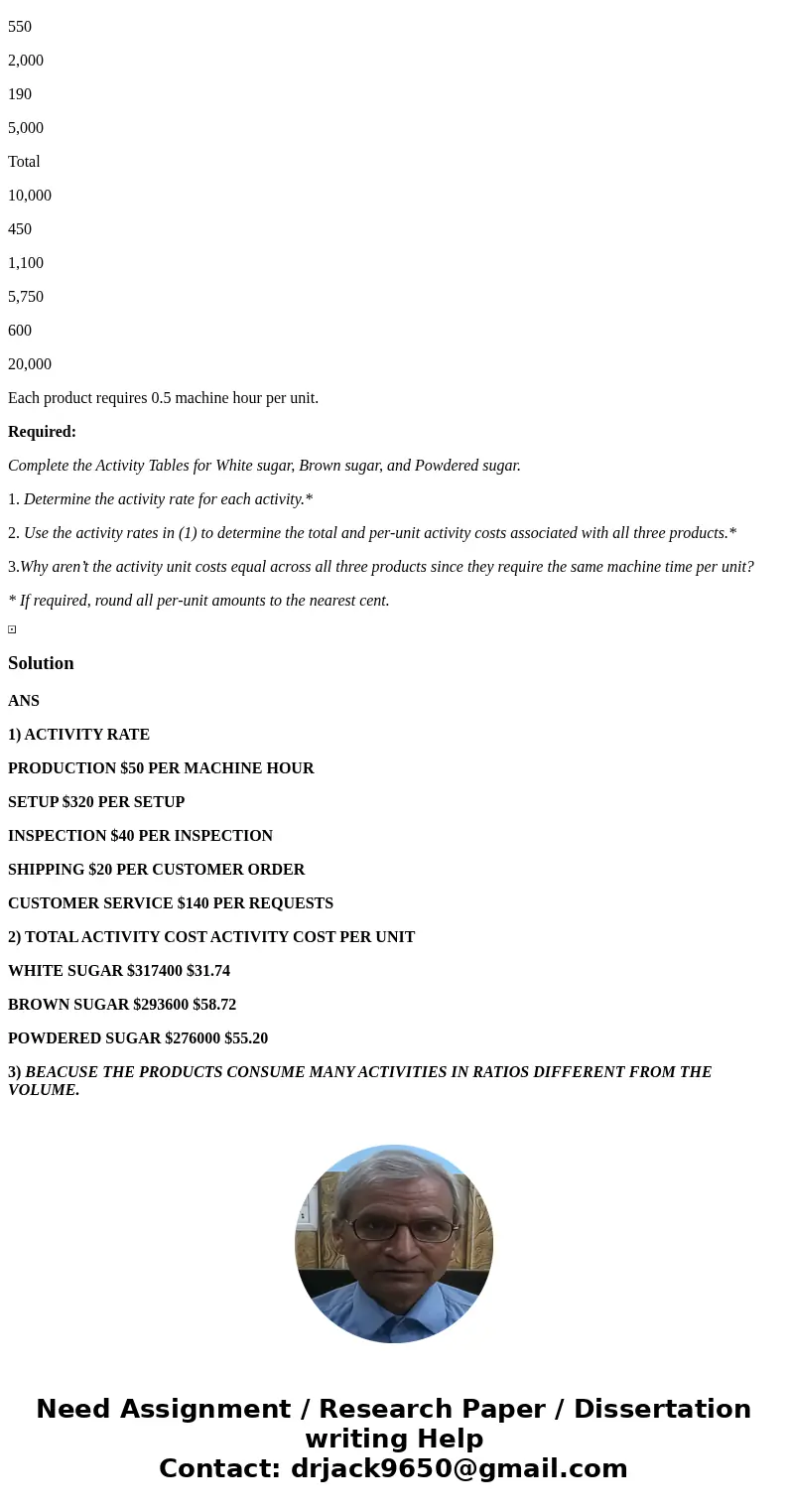Sweet Sugar Company manufactures three products white sugar
Sweet Sugar Company manufactures three products (white sugar, brown sugar, and powdered sugar) in a continuous production process. Senior management has asked the controller to conduct an activity-based costing study. The controller identified the amount of factory overhead required by the critical activities of the organization as follows:
1
Activity
Budgeted Activity Cost
2
Production
$500,000.00
3
Setup
144,000.00
4
Inspection
44,000.00
5
Shipping
115,000.00
6
Customer service
84,000.00
7
Total
$887,000.00
The activity bases identified for each activity are as follows:
Activity
Activity Base
Production
Machine hours
Setup
Number of setups
Inspection
Number of inspections
Shipping
Number of customer orders
Customer service
Number of customer service requests
The activity-base usage quantities and units produced for the three products were determined from corporate records and are as follows:
Machine
Number of
Number of
Number of
Customer Service
Hours
Setups
Inspections
Customer Orders
Requests
Units
White sugar
5,000
85
220
1,150
60
10,000
Brown sugar
2,500
170
330
2,600
350
5,000
Powdered sugar
2,500
195
550
2,000
190
5,000
Total
10,000
450
1,100
5,750
600
20,000
Each product requires 0.5 machine hour per unit.
Required:
Complete the Activity Tables for White sugar, Brown sugar, and Powdered sugar.
1. Determine the activity rate for each activity.*
2. Use the activity rates in (1) to determine the total and per-unit activity costs associated with all three products.*
3.Why aren’t the activity unit costs equal across all three products since they require the same machine time per unit?
* If required, round all per-unit amounts to the nearest cent.
Solution
ANS
1) ACTIVITY RATE
PRODUCTION $50 PER MACHINE HOUR
SETUP $320 PER SETUP
INSPECTION $40 PER INSPECTION
SHIPPING $20 PER CUSTOMER ORDER
CUSTOMER SERVICE $140 PER REQUESTS
2) TOTAL ACTIVITY COST ACTIVITY COST PER UNIT
WHITE SUGAR $317400 $31.74
BROWN SUGAR $293600 $58.72
POWDERED SUGAR $276000 $55.20
3) BEACUSE THE PRODUCTS CONSUME MANY ACTIVITIES IN RATIOS DIFFERENT FROM THE VOLUME.



 Homework Sourse
Homework Sourse